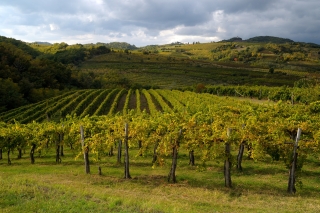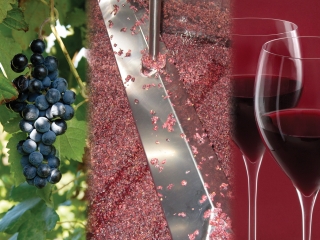Creativity is born of passion for the things you do, whereas your skill and your own taste can add a more personal note to it. Grapes represent a continuous challenge, as they have a wonderful, and at the same time, very demanding characteristic – their character changes every year, which makes winemakers gain new experiences, but also provides them with continuous challenges.
The wine character is shaped in the vineyard – a noble wine can only be made from quality grape berries. Add to that the right winemaking equipment and you are guaranteed that the ‘birth’ of the new wine will truly be a day to celebrate.

Maceration
Intensive cap submerging in the initial phase of the maceration process extracts mostly anthocyanins (pigments), while tannins are obtained from grape skins and seeds during further fermentation and alcohol formation. With the right fermenter and maceration settings, a winemaker can influence the elution of polyphenol compounds and produce the desired wine style.
Maceration and fermentation temperatures also play a big role in this process, as the amount of anthocyanins and polysaccharides in wine can be increased with proper grape pomace cooling and pre-fermentation cold maceration.
During the fermentation and maceration process, it is also very important that the cap be submerged very gently in order to avoid damaging the seeds, which could result in the elution of sour and bitter tannins. In case of reduced physiological tannin maturity, which is the consequence of inadequate grape ripeness, it is possible to reduce the extraction of sour and immature tannins with an automatic seed removal already during the maceration and fermentation process. In fact, it is known that more than 60% of tannins in the final wine are extracted from the seeds, so seed quantity regulation is an important innovation in the maceration process.

Tips for technology and program selection
Grape pressing
Grape pressing is one of the most important stages of grape processing, as it greatly influences the extraction of various compounds from the grapes into the must.
Aside from the primary compounds found in grapes (sugar, acids, minerals), pressing also releases important secondary metabolites, such as aroma precursors and polyphenol compounds. Extraction is, therefore, one of the key factors that influence the style and final quality of the wine. It is mostly influenced by how long and under what pressure you carry out the pressing process.
Gently pressing white grapes and adding first press fractions into free-run juice produces soft and elegant white wines. If you want to make more structured wines, on the other hand, you can add press fractions of higher pressures. They contain higher values of aromatic compounds, but also bring more polyphenol compounds. This can make the wine sour and bitter, which is very unwelcome in fresh white wines.
Another way to achieve a more intense aromatic precursor extraction is to carry out the pomace maceration at lower temperatures in closed presses. This way you can prevent any negative influences of polyphenol and aromatic substance oxidations. In order to avoid polyphenol oxidation and wine bitterness in white grape processing, it is now becoming more and more frequent to carry out the pressing process in the absence of oxygen - hyperreductive technology.
Presses can also be used for red grape pomace pressing, the process being very similar to that with white grapes. Individual press fractions of higher pressures are separated from the free-run juice by regulating the overpressure. This way we can regulate the final bitterness of the red wines.
